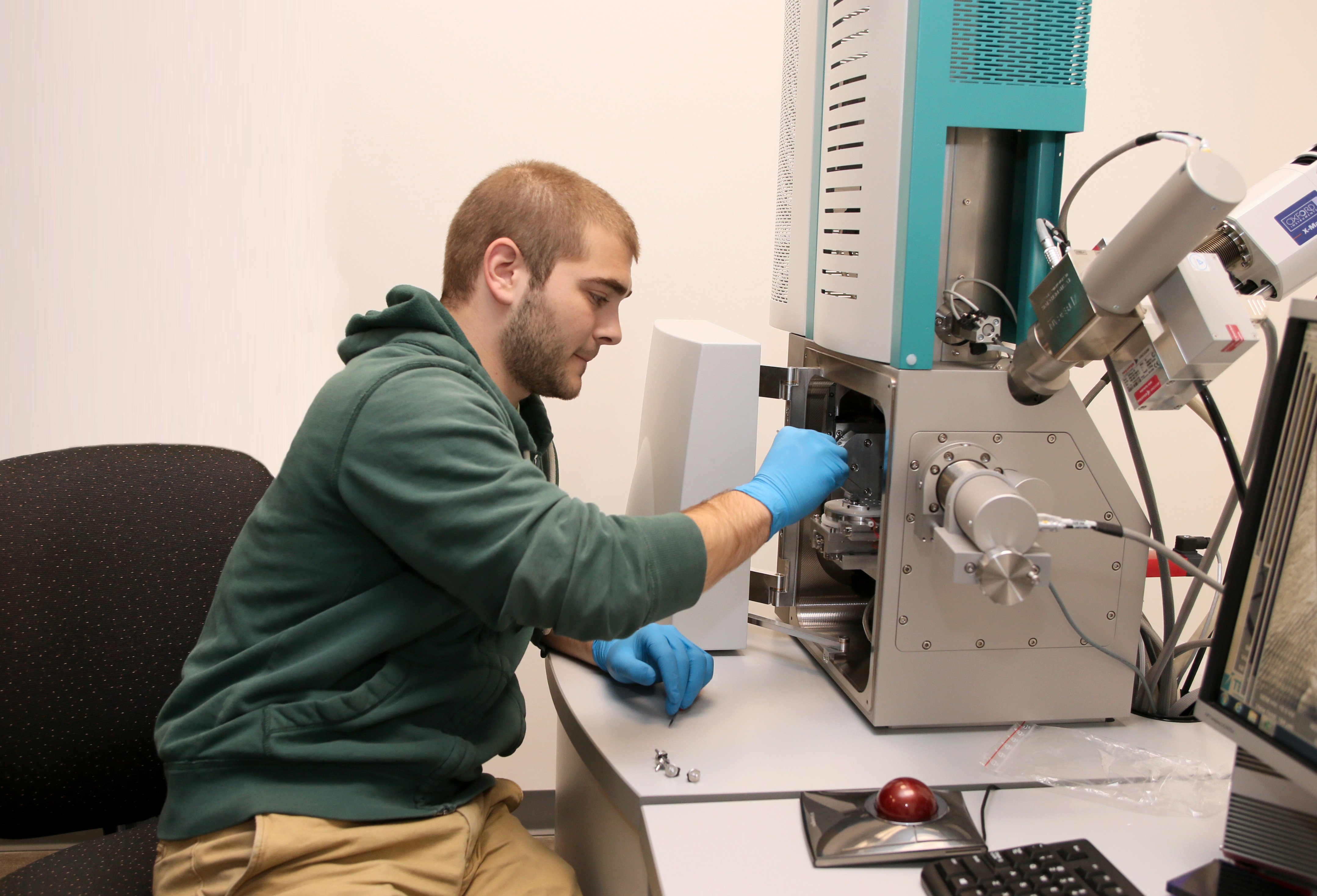 |
| A physics student places a specimen in the scanning electron microscope (top) and analyzes it (above). |
The National Science Foundation has awarded a grant of $151,940 to Clarion University physics professor Dr. Chunfei Li, bringing the total in NSF grants awarded to Dr. Li since 2011 to $700,545. This latest award will be used to purchase an electron back scattering diffraction, an attachment for Clarion’s existing scanning electron microscope. It is rare, even at the national level, for a teaching university to have this level of instrumentation.
The state-of-the-art, research-grade SEM, purchased in 2013 through a prior NSF grant, allows students to observe subjects at the nanometer level. For perspective, the diameter of a human hair is 100 micrometers, and a micrometer is 1,000 nanometers. The addition of the EBSD will enable researchers to gather information regarding crystallography (how atoms are arranged in a solid structure), down to 100 nanometers.
As a result, Clarion's SEM becomes a multi-function material characterization instrument, capable of revealing the morphology, elemental and crystal structure information.
"Crystallography is an important part of material science," Li said. "The EBSD will give our students firsthand experience in this aspect."
The instrument will especially benefit the research activities in the fields of physics, anthropology, biology, geology and chemistry. The educational impact is significant. Using the instrument will allow students to apply the concepts learned in lecture.
In the past two years, 10 Clarion students have carried out research or independent study with SEM. Four of the students are listed as co-authors on publications in peer-reviewed articles, and nine of them are listed as co-authors of conference presentations. Eight of the students have graduated, with four accepted to graduate schools and three working for companies.
Two students had the opportunity to attend an annual microscopy and microanalysis conference with researchers from all over the world. "In the conference, a researcher from South Korea became interested in our work, approached our students and proposed collaboration," Li said.
During the research process, students also made scientific breakthroughs.
Junior physics major Andrew Baker found what is believed to be a quasicrystalline thin film on a regular crystalline substrate, which contributed significantly to securing the EBSD grant. Senior Christopher Carey found a surface layer on spherical particles, which had not been reported previously. These findings have been or will be organized into papers in peer-reviewed journals.
In the past five years, approximately 30 high school students have experienced the micro-nano world through the university's SEM and its Science in Motion program, led by Karen Spuck, one of the co-writers of the original grant proposal. Workshop topics have included how to collect and preserve fungi and use the SEM to image important structural features and a nanomaterial synthesis and observation workshop. Dr. Susan Prezzano, another co-writer of the SEM grant has used the equipment to exam items uncovered from the living sites of Native Americans, allowing students to consider anthropology from a completely different point of view.
Additionally, with the support of the NSF grants, three high school students had the opportunity to work on projects as paid research assistants over the past two years. One student worked on the initial oxidation process of icosahedral quasicrystalline particles, one student worked on the dispersion of gold nanoparticles on spherical alloy spheres, and one student worked on the observation of concentric nanorings.